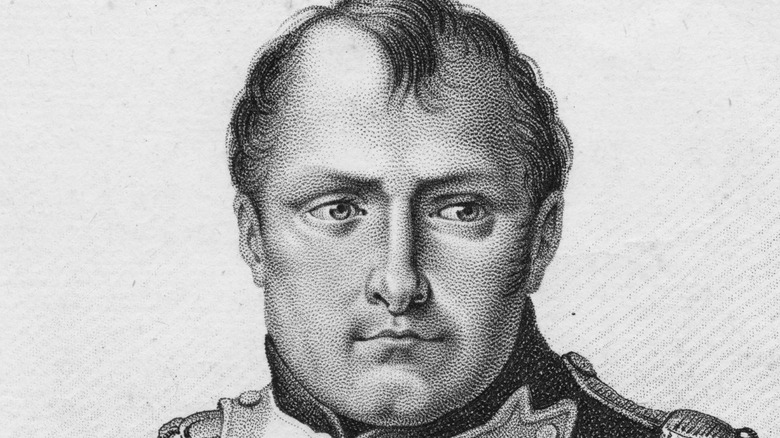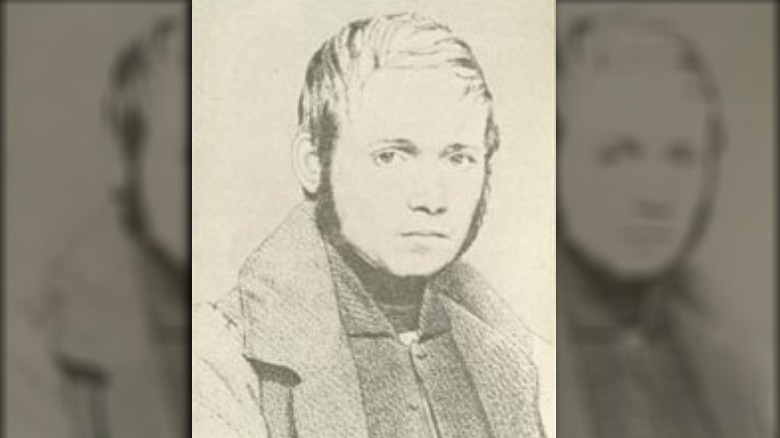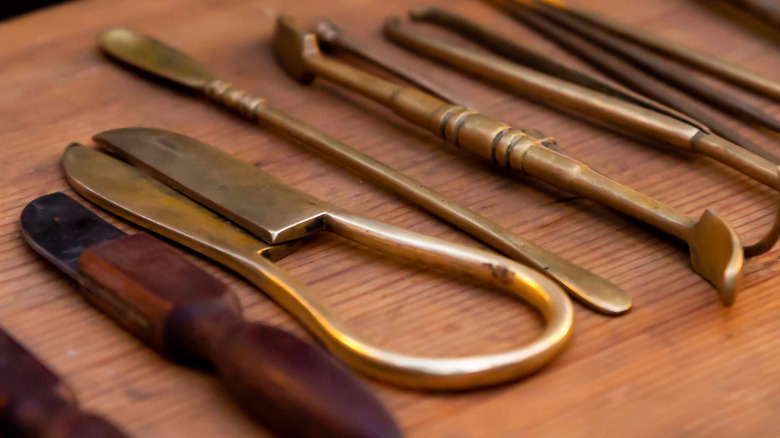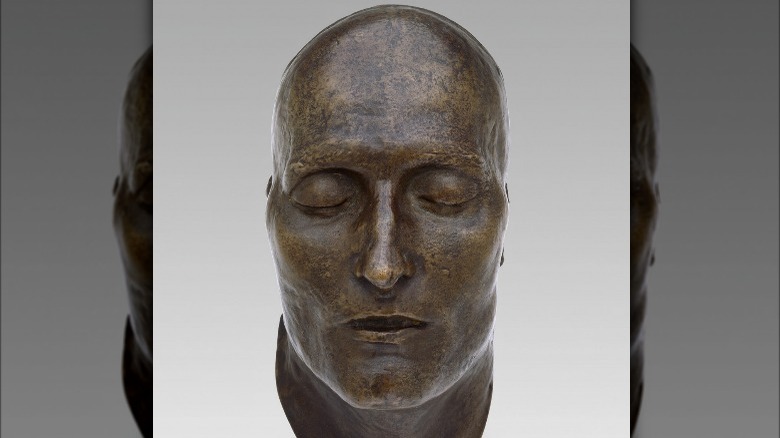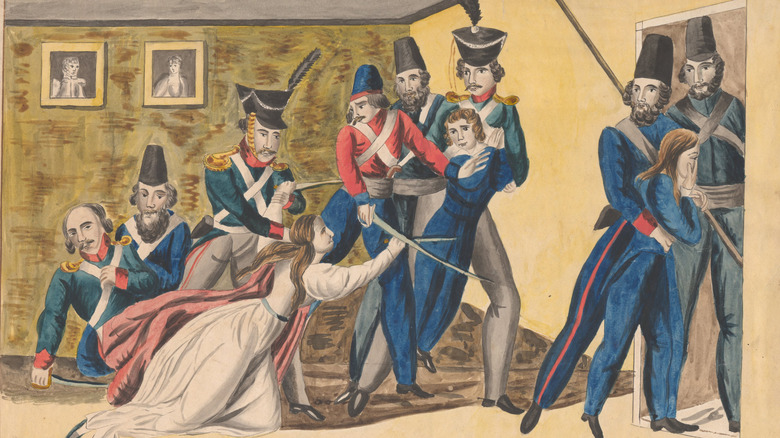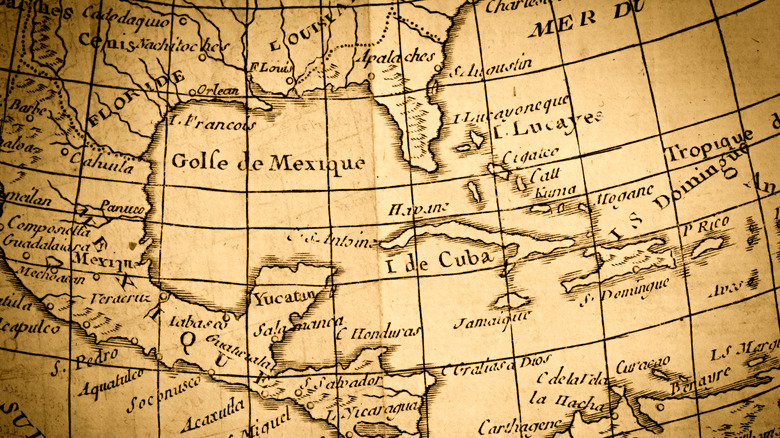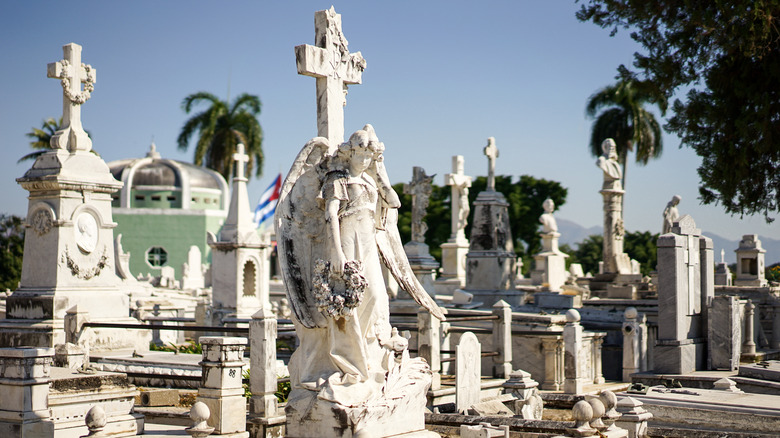The Unbelievable Story Of Napoleon's Conman Doctor
When Napoleon lay dying of cancer in exile, on the island of St. Helena, no doctor could see him. The emperor had fired them all. He mistrusted doctors in general, as documents from the Fondation Napoleon make clear, and the seven or more British Navy staff who lived on St. Helena with him he viewed with particular disdain.
Napoleon (above) had a powerful uncle in Paris, his mother's half-brother Joseph Fesch. Fesch was a cardinal of the Catholic Church (via Britannica), and he had the power to send a new doctor to see his ailing nephew. The young man he chose for the job turned out to be one of the most fascinating conmen of the 19th century: Francesco Carlo Antommarchi, known as François Antommarchi: a bumbling, dishonest, good-hearted adventurer. Antommarchi would live through several of the huge moments of European history, and make a name for himself as an eye surgeon in the growing cities of North America. It may be unfair that history will always remember him, in the words of one British Medical Journal contributor, as "the strangest and least attractive" of "all the petty men who walked under the huge legs of the Colossus Napoleon" (via JSTOR).
A promising student
Like Napoleon, Antommarchi (above) was a Corsican, born in Morsiglia in 1780. According to documents hosted by the Hektoen Institute of Medicine, Antommarchi went to Tuscany in his teens to study surgery.
Surgery at the time was a bloody business. Surgeons were not considered physicians, as Rasmussen University's health science blog makes clear; for centuries they often doubled as barbers, shaving one customer, sawing off another's wounded leg. ("Here for a bone setting?" "No, just a haircut.")
But universities of the time were closing the gap between surgery and medicine. Professors of anatomy, like Paolo Mascagni, were starting to map the human body, exploring and categorizing its various systems (muscular, skeletal, venous, nervous) and drawing them with accuracy. Mascagni, an expert in the lymphatic system, used his skills as a draftsman to make prints of the human body in various poses, as study aids for artists (via University of Iowa). Antommarchi became Mascagni's assistant. He had the gruesome job of opening cadavers in the anatomical theater while Mascagni lectured students. It seems he had quite a knack for unzipping dead bodies, and Mascagni soon entrusted him with his famous anatomical prints.
It seems Antommarchi's first great con had something to do with these prints. He published a pirated version, and may have claimed authorship himself. It earned him the Mascagni family's hatred and got him in trouble with the police.
'A blockhead, a fop, a sneak'
Antommarchi's resume was decent, but he must have embellished it. Why else would Cardinal Fesch choose him, a 30-something with a criminal record and no experience except cutting up cadavers, to be Napoleon's personal physician?
If it was the young man's charm that got him the gig, it wouldn't get him very far on St. Helena. The chatty, vain Antommarchi attempted to flatter Napoleon, who saw through him immediately, calling him "an ignoramus, a blockhead, a fop, a sneak" (via Fondation Napoleon). "I would give him my horse to dissect," Napoleon said drily, "but I would not trust him with the cure of my own foot" (per Hoektoen).
To be fair, some of Antommarchi's advice was sensible. He wanted the obese, sedentary Napoleon to get fresh air and exercise; the emperor refused. But the would-be physician also wanted his patient to take enormous quantities of laxative. Given Napoleon's serious ulcer, which was turning cancerous, this was outrageously bad advice. After the first few doses Napoleon declined to take any further medication from anyone.
When the emperor died, Antommarchi had a chance to show off his anatomical skills at the autopsy. His report, however, was completely at odds with the British medical staff's second autopsy. Antommarchi was good with a scalpel, but his medical skills ended there.
The death mask scandal
Antommarchi's third great con, after the Mascagni scandal and getting himself hired as a doctor, came right after the death of his famous patient — two days and one night after, to be precise.
People in the 19th century often made death masks of deceased celebrities, pressing wax or plaster to their faces to capture one last accurate image for posterity. The process was complicated. A whole face took several stages to capture without breaking the cast.
On May 7, 1821, one of the British medical staff on St. Helena decided to make a mask of the now-dead Napoleon. The affable Antommarchi was happy to assist, and the two men worked into the evening. The next morning, the doctor was horrified to find that the middle of the face, with the eyes and nose, had been cut out of the mask. He stormed into Antommarchi's quarters, demanding an explanation. Antommarchi claimed to have no idea where the missing piece was. But when he returned to France, Antommarchi began selling casts of the "original" death mask of Napoleon Bonaparte, the one seen above (via Fondation Napoleon).
Did Antommarchi steal the middle of the original cast? Many people found the resemblance unconvincing. It looked more like a copy of an antique bust. It would be a fraud either way, though: either he lied on St. Helena, or he lied in France.
In the service of Poland
We lose Antommarchi's trail after his return to France, but by 1831 he had somehow wrangled another enormously important post, for which he was outrageously unqualified: inspector-general of all the hospitals in Warsaw, Poland.
How did he get there? An offhand mention in an 1895 memoir, "Gossip of the Caribbees" (available at Google Books), gives us a clue. The author records a conversation he had with the wife of the French ambassador to Russia. The lady had met Antommarchi in St. Petersburg at an unknown date. Like everyone else, she recalled him being charming and a natural flatterer. The lady was the lover of an Italian diplomat, also living in St. Petersburg and also a friend of Antommarchi; when this diplomat was sent to Warsaw in 1830, she and Antommarchi went with him, on a lark. The Poles had just launched a revolution, called the November Uprising, to overthrow their Russian occupiers; and while the lady in the memoir claims Antommarchi stayed apolitical, other sources suggest he joined the Polish revolutionaries, enough to make him persona non grata when Russia snuffed the revolt.
Is this true, though? The University of Iowa claims that the city of Warsaw invited Antommarchi to take the post for his dubious expertise in the treatment of cholera. Both stories could be true: they both have the mark of a gallant, feckless liar. In any case, Antommarchi left Warsaw around 1831.
To the New World
The lady in the memoir says she encouraged him to go to the West Indies, where she lost track of him. "He was the truest friend I ever had," she said, which says more about her than she realized. (She had also sent him a portrait of herself framed in diamonds — on his request.)
The sources are vague about where Antommarchi went in the New World. He appears to have lived in Mexico, performing cataract surgery, before moving to New Orleans, a city whose European character probably suited him. He had a number of bronze casts of his infamous Napoleon death mask tucked away in his suitcase, and he used them with diplomatic aplomb. New Orleans magazine Gambit reports that he gave one to Mayor Denis Prieur in 1834.
It was pure Antommarchi. "Penetrated by the generous sentiments and keenly sensible to the noble welcome with which the Louisianans honor me," he wrote, "I have the honor to offer to this city the mask of the Emperor Napoleon, in bronze, molded by me at St. Helena after his death."
Run to ground in Cuba
By 1837, according to articles from Habana Radio and StartupCuba, he arrived in the Spanish colony of Cuba, looking for a relative and eventually settling in Santiago. His memoirs of life on St. Helena had made him a minor celebrity, despite the obvious falsehoods in it (like the tempest he says uprooted all the trees on the island as Napoleon lay dying, per the British Medical Journal). He still had a bronze death mask in his baggage, along with other trinkets he claimed were relics of the emperor, like a pocket watch set to 5:49, the moment of the great man's death. These would eventually find their way into the hands of the governor of Santiago, and are still on exhibit at the Napoleonic Museum in Havana.
Yellow fever swept Cuba in 1838, and Antommarchi — who owed all of his victories to someone else's death — died, aged 58. He is buried in the Santa Ifigenia Cemetery of Santiago.
